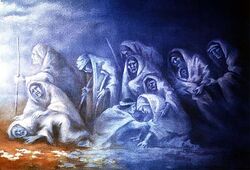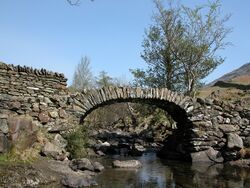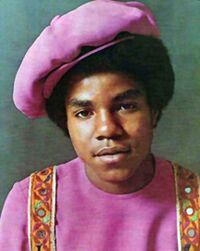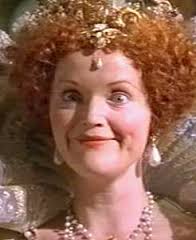The Jackson 5
In the late 1960s, a band of brothers did something revolutionary and deliberately made their way to Detroit. Once there, they soon found themselves at Motown Records, auditioning for legendary hit-maker Halle Berry Gordy. Within a year, they were global superstars. But these five unknowns would have been nothing without the understated genius of father Joe to mold them into a band: The Jackson 5.
The choice of name was unusual. Gordy liked bands with names like "The Miracles" or "The Supremes" so he could sack truculent singers without affecting the billing or changing the posters. But "Papa" Joe Jackson refused. They were the Jackson 5 and all would get equal exposure, including the tiny one with the big smile and booming voice.
Joe Jackson himself was born in Fountain Hill, Arkansas, but moved to Indiana as a toddler when the family realized that staying in Indiana would involve living there. He began working at the Inland Steel Company, where it is thought that the loud, monotonous noises of the steelworks affected his hearing so profoundly that he began to discern musical ability in his boys. Joe Jackson himself claimed to "enjoy loud monotonous noise", and soon the world would come to share his passion.
Those inclined to see Joe Jackson as simply a lucky bully hanging on the coat-tails of five talented sons could not be more wrong. Joe's genius is shown by riding on the coat-tails of one talented son and melding him with four brothers from two continents and three different centuries. The whole world knows about Michael, his commitment to orally ridding the world of prescription drugs, and his wish to "give a little bit of himself" to every pre-teen boy he met — but who were the others who made the Jacksons so successful? It's time to talk about Andrew, Paul, Stonewall, Tito, and... Glenda.
Andrew Jackson
Perhaps it was his commitment to 1970s disco percussion that made Andrew Jackson such a disastrous 19th century president, but it should be remembered that he almost single-handedly introduced the idea of social justice for all American citizens prepared to make the effort of be rich and white. Born in 1767, he first came to public attention during the War of 1812, when he won a startling victory that threw back a British Invasion lead by Major General Herman S. Hermitz and supported by the might of the Royal Navy's West Indies Squadron under Rear Admiral Manfred Mann. Sadly for Jackson's career, the British were busy defeating Napoleon in 1812 and found it difficult to find time to fight the battle until 1815, by which time their hearts were no longer in it. Nevertheless, the victory secured Louisiana for the Union, a result that upset American voters so much that it took them until the 1829 election to forgive him.
In common with other African-American musicians of the time, Andrew Jackson took great pains to use his celebrity to draw attention to the plight of his oppressed brethren in the Deep South. To the dismay of many, he did this by buying the maximum number of slaves his budget allowed, breeding them, and selling on their offspring. As he explained:
"It's basic economics, man — simple as 1,2,3, ABC. These poor brothers are perishable stock. I ain't gettin' nuthin' back keep in' 'em lying around. Either I fatten them up for Thanksgiving or I recoup my initial investment sellin' on the young 'uns so I can buy more."
And buy more he did, saving the adults from boredom by planting hundreds of acres of cotton for them to cut. Sadly, the Nobel Peace Prize would be unavailable for another half-century, but this did not stop Andrew Jackson from extending his charity work to the similarly oppressed Native Americans. Told of trouble brewing in Creek lands, he reportedly responded with the famous words: "I'll be there".
It was clear from the off that the possession of fertile, gold-bearing land could only cause trouble to the Creeks, Cherokees, and Chickasaws. Andrew Jackson relieved them of the responsibility of owning 25 million acres and the associated maintenance costs, as well as generously allowing the profits from the sale of these lands to rest in his bank account to avoid tax complications for the often illiterate and now penniless former owners. It is testament to his commitment to Native affairs that he allowed these funds to remain in his name for the rest of his life and passed them on to the care of his children on his death, to relieve future generations of Chickasaws of the need to worry over them.
Many of these Native Americans had grown fat from the fecundity of their former cornfields and the sheer abundance of game on their ancestral lands. With lack of exercise leading to imminent threat of type II diabetes, Andrew Jackson set out to save the Indians from themselves by forcing them to walk a third of the way across the continent to land that was gloriously free of mineral wealth, soil nutrients, and surface water. To increase the value of this cardiovascular exercise, Jackson restricted the daily ration to three slices of mud and a pinch of salt. This radical diet was so successful that it saved thousands of Creeks to death and became the model for future presidents who later further dispossessed the displaced populations, arguing that the new land they were occupying was in Indiana whereas the treaty had granted them land in "perpetuity".
Paul Jackson
Paul Jackson, who became Paul Jackson-Pollock following his marriage to a marine fish of the genus Gadidae, was the group's sleeve artist. Born in 1912, his inability to sing, play, dance, stand, or feed himself limited his career options even within the Jackson 5. Joe Jackson was not the only parent faced with the question "What do you do with an entirely useless child?"; in the 1960s, the standard answer to this question was send them to art college.[1]
Raging alcoholism combined with a childish predilection for eating his own paints soon caused digestive difficulties that provided inspiration for Paul. After only one term he had become a professional sleeve and toilet bowl designer. Famed for his work on the Jackson 5's album What the Hell Is That?, his handiwork could soon be seen on Aretha Franklin's acclaimed Don't know what it us but I heard it was real clever and the Rolling Stones' Too High to Care.
Accused of simply throwing paint at pieces of paper and hoping for the best, Paul claimed that every one of his pictures had a hidden, figurative meaning. When Michael offered him ophthalmic surgery to go along with his psychiatric treatment, he is said to have replied:
"Don't Doctor My Eyes, man. I got $70,000 from the Guggenheim for the last piece and it only takes ten minutes to stand over the canvas with a paint-brush and Shake Your Body (Down to the Ground). Dude, can't you see we got a good thing going here? Don't mess it up by {insert amusingly appropriate Jacksons' hit here}."
By the mid-70s, Paul's onstage appearances became rarer as his appearance in theatre bars became more common. His financial situation worsened even as he realized he could pay off his tab puking on audience members' t-shirts and selling them back as original artwork. It may have been desperation as well as seventeen double Bourbons that drove him to crash his Buick into an elm tree. Or he may have simply thought that wrapping his intestines around its trunk would make a nice picture. Today the influence of Paul's artistic vision can be seen wherever kindergarten children are allowed access to crayons and their mothers' newly-painted lounge walls.
Stonewall Jackson
In many ways the least black of all the Jacksons save Michael, Thomas Jonathan "Stonewall" Jackson was born in 1824 — making him a mere 125 years old at the time Joe Jackson registered the birth at Gary Maternity Hospital in 1949. Without any discernible musical ability, Thomas was the perfect replacement when big brother Andrew's second term in the Jackson 5 was threatened by impeachment. He was immediately allotted responsibility for choreography. While Michael danced with fluidity and freedom, the rest of the group mostly stood in-line and stayed self-consciously like a bunch of middle-aged geography teachers supervising a high school dance. And it was this linear immobility that earned Thomas his nickname "Stonewall".
Thomas's American ancestry began with his great-grandparents. Both were transported from England for larceny in 1749, with deportation to Australia not yet available and a lifetime of Maryland still considered "Ye fate nary less terryble than death." By the time of Thomas's birth the family were living in West Virginia, presumably as a result of repeated re-offending.
The death of his parents meant that the young boy was mostly brought up by his uncle, and the resulting lack of formal schooling meant that he was felt to be an ideal candidate for West Point Military Academy. He was soon showing signs of his legendary military genius by shelling surrendering civilians in Mexico City and helping brother Andrew move the Seminole nation from Florida to "wherever, man." Andrew Jackson was said to be particularly impressed by Thomas's ability to kill thousands of Stone Age tribesmen without wasting expensive ammunition by the simple expedient of force-marching them into unknown territory on a diet of quarter of a turnip per family per day.
After teaching at the Virginia Military Institute in Lexington for some years, the outbreak of the Civil War saw Tom returning to active duty with the newly-formed Horse Artillery. When moonshine supplies ran low at the first Battle of Bull Run, Confederate resistance began to crumble. Unable to starve his Union opponents into submission and finding his horses' marksmanship less than impressive, Jackson lined-up his men and instigated a truly terrifying dad-dancing session that repelled the Yankee advance and saved the day.
In the spring of 1862, Maj. Gen. Nathaniel P. Motor's army threatened to outflank General Lee. There was only one man who could hold back an entire army and stop him linking up with General Hospital's army of the Potomac. But it would be another century until Bruce Banner was exposed to Gamma radiation. Without The Hulk to save them Jackson did what he could, dressing his men in the traditional kilts of his Scots-Irish ancestors and high-kicking his way along the Shenandoah Valley. So terrifying was this display of ill-coordinated can-can-ing that it tied down up to 50,000 Union troops for months, leaving many of them with debilitating mental injuries.
The success of the Jacksons at this stage of their career was such that in 1862, Stonewall was booked for a Seven Day performance at Richmond, before being re-hired to rehash their performance at Bull Run II (This Time It's Personal). Further performances at Fredericksburg and Chancellorsville were less well-received, with several shots fired from the audience. At least one of these hit Stonewall's arm, the amputation of which was said to have actually improved his dancing. The same cannot be said of his death, which was thought to make a subsequent performance on NBC's Evening of Motown in 1972 "eerily stiff and lifeless".
Tito Jackson
Singer, guitarist, revolutionary, and dictator-for-life of the Southern Slavs, Tito was the original leader of the Jackson 5. Despite not being born until 1953, Tito demonstrated the precocious nature of his talent by leading the non-Russian contingent among the Bolshevik revolutionaries in Petrograd 1917, trash-talking Menshevik leader Aleksandr "The Meerkat" Kerensky so severely that he resigned the premiership in favor of Lenin. Arrested by the new authorities, Tito was tried as a political prisoner, but escaped punishment for the destruction of priceless art treasures during the storming of the Winter Palace by "blaming it on the boogie".
In the early 1920s, Tito insisted on returning to the newly-independent Yugoslavia, claiming that there "ain't no sunshine" in Moscow. Soon he was winning admirers for both his melodic singing and gentle disco-tinged guitar style, as well as his powerful oratory and willingness to assassinate political opposition. When the Germans invaded in 1941, there were other choices to lead the guerrillas. However, with a theatricality echoed in his Jackson 5 career, Tito overshadowed Mihalovic by growing an impressive afro to demonstrate commitment to the disenfranchised of South Africa and the southern states of the USA — an accomplishment Mihalovic simply couldn't match.
At the end of the war, Tito could claim in disputed leadership of Yugoslavia, having successfully fought off the threat from the Wehrmacht, the Chetnik monarchist opposition, and The Osmonds. A disappointed Winston Churchill expected that Yugoslavia would would form part of the Russian sphere of influence. Tito, however, had other ideas.
"I ain't joinin' no one else's crew, man. Have you seen them Cossack hats? Man, they'd ruin my do!"
In reality, many commentators at the time believe that Tito rejected the opportunity to join the Warsaw Pact when Stalin refused to adopt his suggested uniform of blue crushed velvet flared pant-suits. Instead he formed the Non-Aligned Movement of newly independent nations signed to neither Stax nor Chess Records, working with Jawaharlal Nehru of India, Gamal Abdel Nasser of Egypt, and Phil Spector of Stockton State Prison, California.
Glenda Jackson
Strictly speaking Glenda Jackson was too female to be considered one of the Jackson brothers, but this did not stop her taking her place as the political commissar of the lovable quintet. Born in Birkenhead on the Wirral, Cheshire, Glenda Jackson was therefore not in the least bit Scouse and had been known to head-but and steal the cars of those who disagree.
She made her professional stage debut in Terence Rattigan's Separate Tables in 1957, gaining great critical praise for her ability to sit at more than one table simultaneously. Four subsequent years in the Royal Shakespeare Company taught her to wear ridiculous costumes without self-consciousness and to utter lines of meaningless drivel with gravitas and conviction. Her performance as Rockin' Robin in King Henry IV Part VIII was particularly noted for her delivery of the notoriously difficult "Twee, Twee, Twiddly Dee" monologue.
However, it was a starring role in Ken Russell's film of Women in Love (1969) which led to her first Oscar and her appearance in Hustler magazine's list of "Top 100 Dykes We'd Like to Knock the Back Out Of". So successful was her career at this point that she was offered some of the greatest roles in cinematic history, playing Queen Elizabeth I twice as well as Hedda Gabler, Cleopatra, and the Pirate Queen who hijacked the Muppet Theatre as her new ship. A successful run on Broadway led inevitably to a role as a irrelevant Socialist member of Parliament in Tony Blair's long-running 1997 farce, "New Labour". Here she demonstrated the true range of her talents by maintaining a straight face while all the time insisting that the Labour Party still stood for the greater good of the working class, the advance of social justice, and not invading far away countries.
Post-Michael Jackson career
Following the departure of Michael Jackson to chase money as a solo singer, the rest of the band carried on. They recruited other Jacksons to fill in the gap. Who can't forget the towering talents of Jesse Jackson and Samuel L. Jackson but neither turned out to be "another Michael". Just as well perhaps.
Footnotes
See also
| Featured version: 13 November 2015 | |
| This article has been featured on the main page. — You can vote for or nominate your favourite articles at Uncyclopedia:VFH. | |










